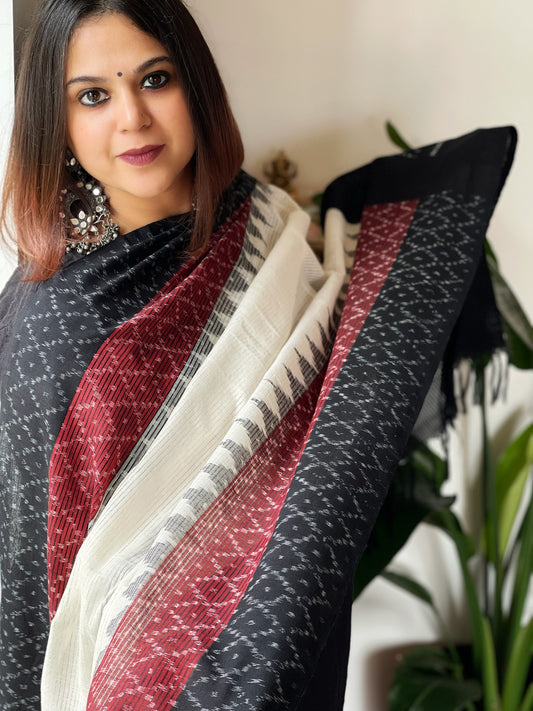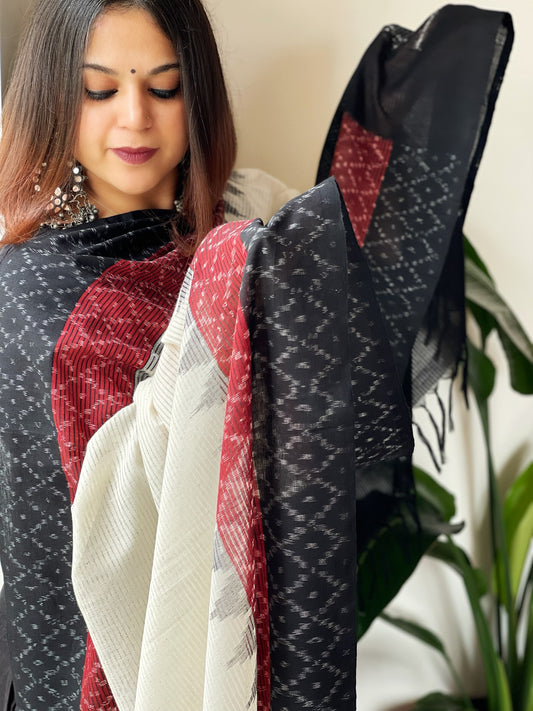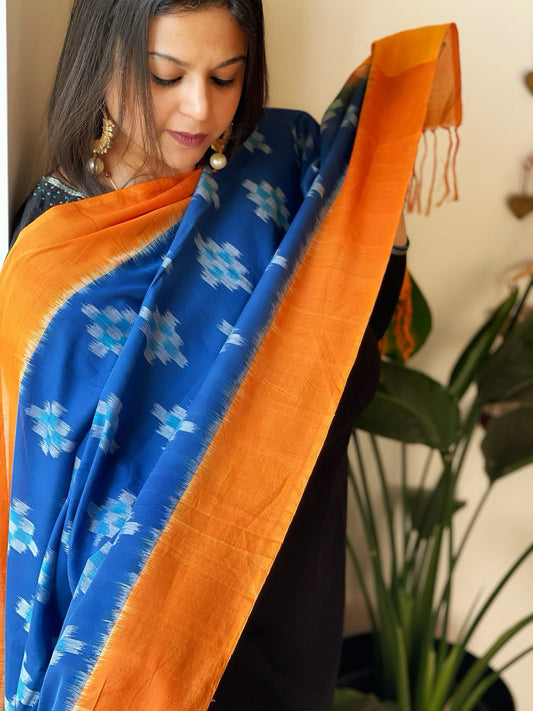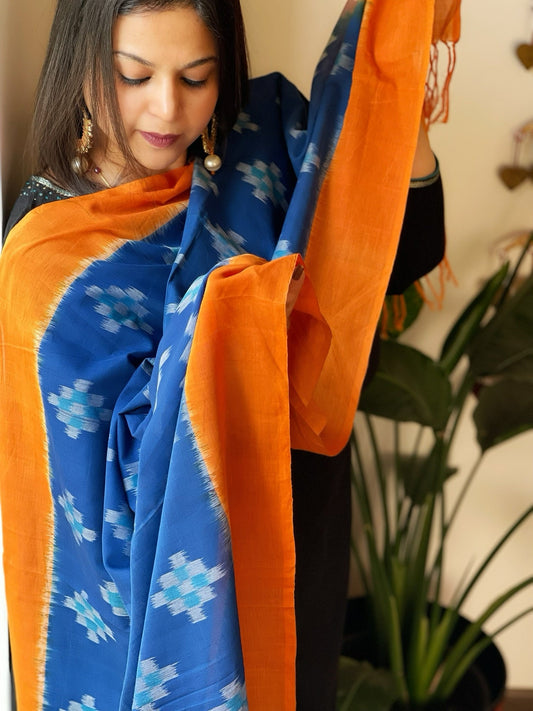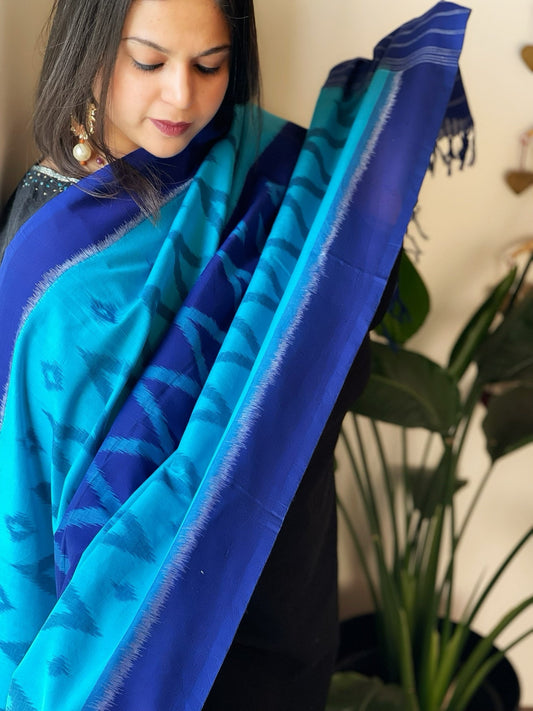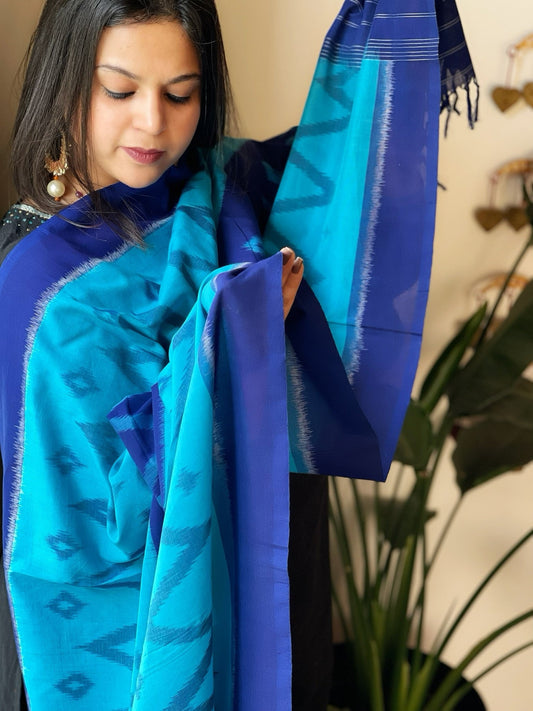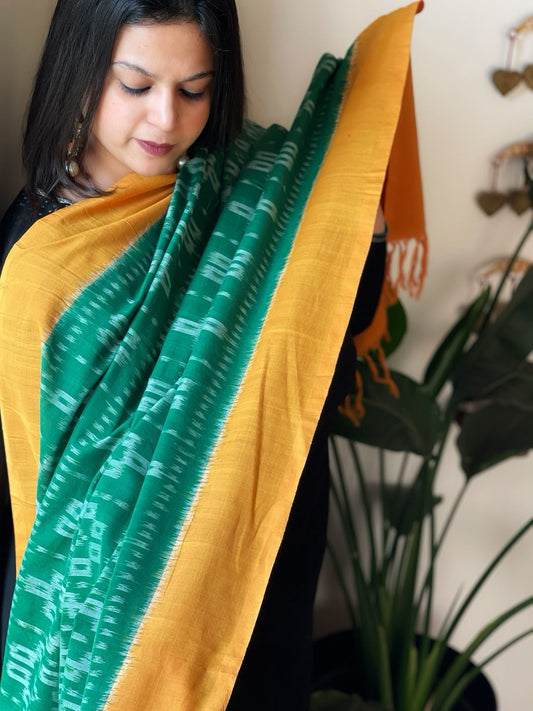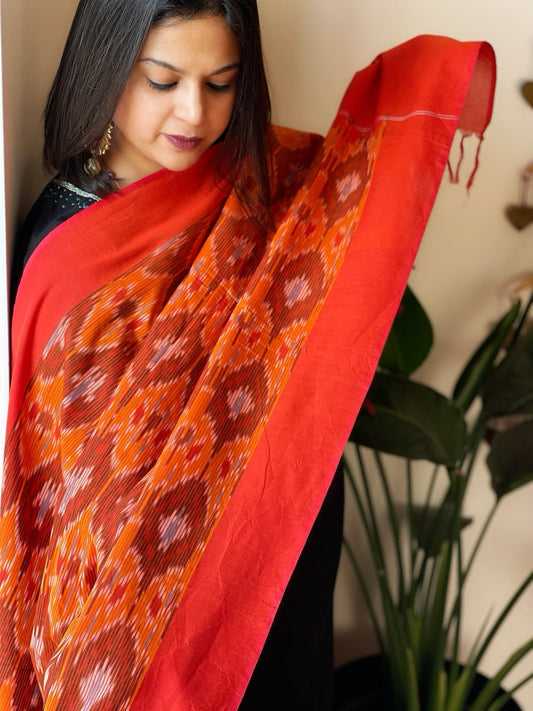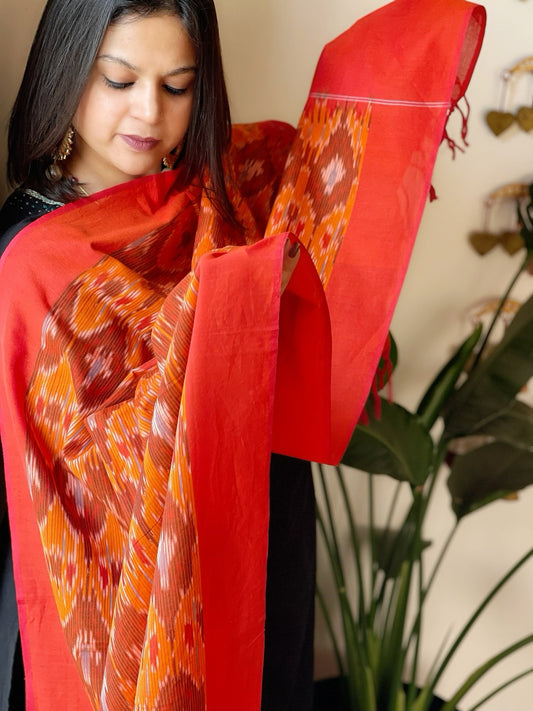Unravelling the Beauty of Kalamkari Art: The Significance of Smell in Authentic Handmade Dupattas
Throughout history, India has been home to some of the most exquisite handmade crafts, each with its distinct technique and charm. One such age-old art form that has captured the hearts of many is Kalamkari. Intricate, soulful, and beautifully detailed, Kalamkari works its magic on a wide range of textile products, including the delightful Dupattas that have long been a staple of Indian ethnic wear. In this article, we will unravel the fascinating process and history of authentic Kalamkari Dupattas and understand why the scent of these delicate masterpieces is key to identifying their authenticity.
The word 'Kalamkari' combines two Persian words: 'kalam' (pen) and 'kari' (craftsmanship). This 3000-year-old art form originated in the ancient Deccan region and has flourished in Andhra Pradesh and Telangana, where local artisans continue to practice the age-old techniques that define Kalamkari. While there are two styles of Kalamkari – Srikalahasti and Machilipatnam – both are united by their intricate detailing, natural dyes, and unique alignment of mythology and textiles.
Kalamkari Dupattas truly stand out for their rich colours, fine motifs, and elaborate storytelling. While there is a charm to these Dupattas that catches the eye instantly, their authenticity can be ascertained by a different sense altogether – the sense of smell. Authentic Kalamkari Dupattas have a distinctive odour that is derived from the natural dyes and processes used in their production. This smell offers a window into the fascinating world of traditional Kalamkari craftsmanship, a world where heritage, skill, and beauty come together to create incredible textile masterpieces.
The Rich History and Tradition of Kalamkari Art
To truly appreciate Kalamkari Dupattas, it's essential to explore their history and the age-old techniques used in creating these textile marvels. This journey will take us centuries back and unveil the passion and dedication of Indian artisans in perpetuating this incredible art form.
- The Origins of Kalamkari Art: Kalamkari art has its roots in ancient India, dating back nearly 3000 years. The art form gained prominence during the Mughal era and reached its zenith under the reign of the Golconda Sultanate. With the patronage of the Mughals, numerous Kalamkari artists found support, and their work came to be valued throughout the region.
- Srikalahasti and Machilipatnam Kalamkari: There are two distinct styles of Kalamkari – the Srikalahasti and the Machilipatnam. The Srikalahasti Kalamkari, also known as pen Kalamkari, is characterised by intricate pen work and religious motifs. This style typically focuses on depicting mythological stories and Hindu epics. In contrast, the Machilipatnam Kalamkari is defined by its block-printing techniques, geometric patterns, and Persian motifs, reflecting the diverse cultural influences of various ruling dynasties.
The Process of Making Kalamkari Dupattas
The process of making Kalamkari Dupattas is a labor-intensive one, with each piece taking several weeks or even months to complete. This traditional art form involves a series of detailed steps, each contributing to the final masterpiece. It involves:
- Preparing the fabric: The cotton fabric is soaked overnight in a mixture of cow dung and bleach, which helps remove the starch and impurities in the fabric. It's then washed thoroughly and dried under the sun.
- Tracing the design: The design for the Kalamkari Dupatta is first sketched on a piece of paper. This sketch is then traced onto the fabric using a bamboo or date palm stick pointed at one end, and dipped in a mixture of jaggery and water.
- Applying the mordant: A mordant, which is a substance that helps the dye adhere to the fabric, is then applied to the fabric. The mordant used in Kalamkari is typically made from a mixture of iron filings and jaggery. The fabric is then dried under the sun, which helps the mordant to set.
- Dyeing the fabric: The fabric is then dyed using natural dyes derived from plants and minerals. The colour of the dye depends on the type of mordant used.
- Painting the design: After the dyeing process, the fabric is washed and dried again. The design is then painted onto the fabric using a kalam, or pen, dipped in the dye. The fabric is then washed and dried again to remove any excess dye.
Given the human element involved, there can be inconsistencies in the design patterns. The lines may not be perfectly straight, or the symmetry might be off in some places. The intricacy of the process is a testament to the traditional craftsmanship of Kalamkari art.
The Smell of Authentic Kalamkari Dupattas and Its Importance
The connection between the smell of authentic Kalamkari Dupattas and their authenticity can be traced back to the fascinating process employed in their creation. Each stage of the intricate Kalamkari technique plays a vital role in the final product, and the smell is no exception.
- Harnessing the Power of Natural Dyes: One of the defining aspects of Kalamkari art is the use of natural dyes derived from plants, flowers, seeds, and fruits. Traditional Kalamkari artists take pride in using eco-friendly, sustainable sources for their rich and vibrant colour palettes. From the deep reds of the madder root to the earthy tones of the myrobalan fruit, these natural dyes not only give Kalamkari Dupattas their striking appearance but also impart a distinctive odour to the fabric.
- The Mordanting Process: The mordanting process is crucial to the Kalamkari technique, as it allows the natural dyes to bond with the fabric. This step often involves using a solution of buffalo milk, myrobalan, and sunflower oil, which results in a unique and pungent smell. The odour is a testament to the authenticity of traditional Kalamkari art, assuring customers that the Dupatta they are purchasing is a genuine piece crafted by skilled artisans.
Caring for Your Kalamkari Dupatta
Proper care and maintenance are essential for preserving the beauty and longevity of your Kalamkari Dupatta. Here are some tips to help you keep your Dupatta in pristine condition:
- Washing Your Kalamkari Dupatta: To maintain the vibrancy of the colors and the integrity of the fabric, it's vital to dry clean your Kalamkari Dupatta instead of washing it. Washing it at home may be challenging, as it requires control of numerous aspects like the type and quantity of the detergent used, the temperature of the water, soaking and cleaning time, etc., to preserve the fabric.
- Drying and Ironing: It's crucial to dry your Kalamkari Dupatta away from direct sunlight and harsh elements that can cause colours to fade. Spread it out on a flat surface, preferably indoors, to air dry. Moreover, use low heat settings while ironing and place a thin cotton cloth between the iron and your Dupatta to protect its delicate fabric and intricate designs.
The Timeless Appeal of Kalamkari Dupattas in Modern Fashion
Despite their age-old origins, Kalamkari Dupattas have a timeless appeal in today's world of fashion. They can be gracefully paired with a wide range of outfits, adding an elegant and ethnic touch to your ensemble. From pairing them with a simple solid-colour kurta to using them as an accessory for a chic, contemporary dress, Kalamkari Dupattas offer endless opportunities for experimentation and stylish self-expression.
Conclusion
Kalamkari Dupattas embody the rich history and tradition of Indian textile art, offering a unique blend of beauty, storytelling, and craftsmanship. The distinctive smell of authentic Kalamkari Dupattas is a testament to the artistry involved in their creation and serves as a reassuring reminder of their cultural heritage. As you embrace the exquisite world of Kalamkari Dupattas, you not only make a bold fashion statement but also support the preservation of India's cherished art forms. So go ahead and let the captivating designs and evocative fragrance of Kalamkari art transport you to a world of unparalleled beauty and intrigue.
Discover the beauty of Kalamkari art with Masakalee's handmade dupattas. Our authentic, handmade dupattas are crafted using traditional techniques and feature intricate designs that showcase the beauty of Kalamkari art. But what sets our dupattas apart is the significance of smell - the use of natural dyes and traditional methods gives our dupattas a unique aroma that adds to their authenticity and beauty. Contact us today to learn more about our handmade dupattas and how they can add a touch of tradition and beauty to your wardrobe.


